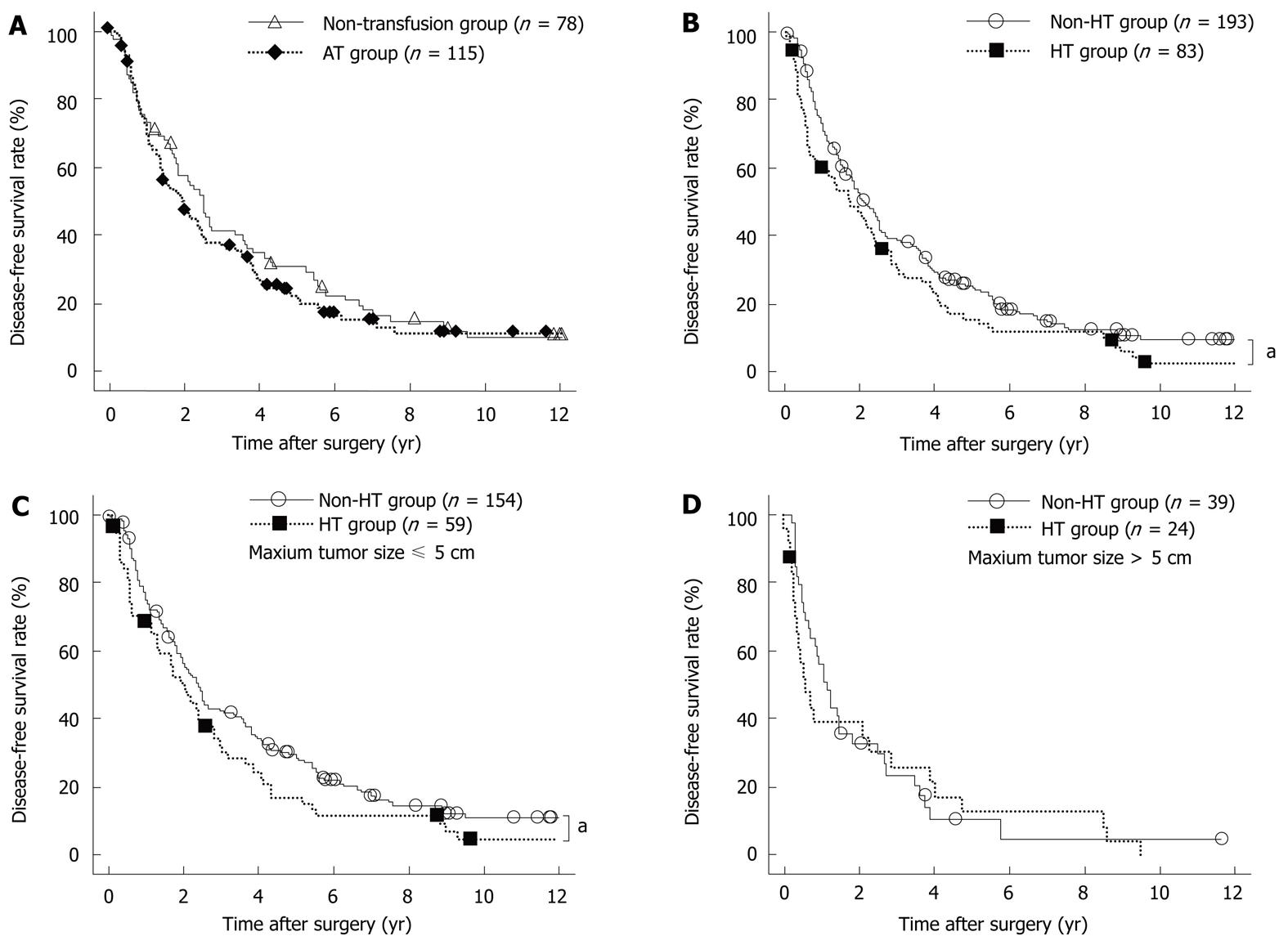Copyright
©2011 Baishideng Publishing Group Co.
World J Gastroenterol. Aug 28, 2011; 17(32): 3709-3715
Published online Aug 28, 2011. doi: 10.3748/wjg.v17.i32.3709
Published online Aug 28, 2011. doi: 10.3748/wjg.v17.i32.3709
Figure 1 Distribution of patients according to transfusion status during periods A and B.
The proportion of patients who received HT was significantly lower in period B than period A (aP < 0.0001). AT: Autologous transfusion; HT: Homologous transfusion.
Figure 2 Disease-free survival after curative surgery for hepatocellular carcinoma.
A: There were no significant differences between the non-transfusion group (solid line) and the Autologous transfusion (AT) group (dotted line) (P = 0.3874); B: The cumulative disease-free survival in the non-Homologous transfusion (HT) group (solid line) was significantly better than in the HT group (dotted line) (aP = 0.0305); C: The disease-free survival in the non-HT group (solid line) was significantly better in than the HT group (dotted line) in patients with maximum tumor size of ≤ 5.0 cm (aP = 0.0452); D: No significant differences were noted between the non-HT group (solid line) and the HT group (dotted line) in patients with the maximum tumor size > 5.0 cm (P = 0.7391).
- Citation: Tomimaru Y, Eguchi H, Marubashi S, Wada H, Kobayashi S, Tanemura M, Umeshita K, Doki Y, Mori M, Nagano H. Advantage of autologous blood transfusion in surgery for hepatocellular carcinoma. World J Gastroenterol 2011; 17(32): 3709-3715
- URL: https://www.wjgnet.com/1007-9327/full/v17/i32/3709.htm
- DOI: https://dx.doi.org/10.3748/wjg.v17.i32.3709










